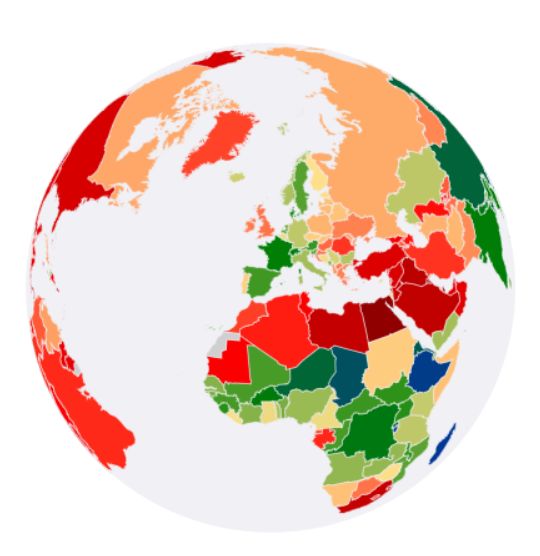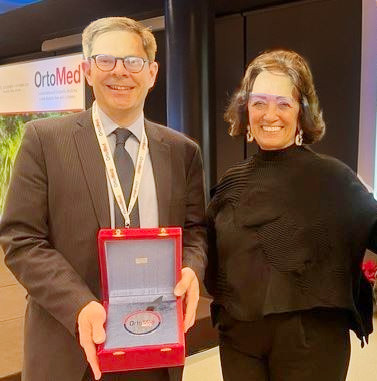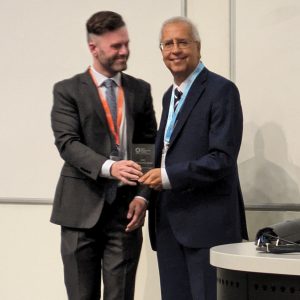[vc_row][vc_column][vc_column_text]Cyrus Cooper Cyrus Cooper, OBE, DL, FMedSci
Director & Professor of Rheumatology, MRC Lifecourse Epidemiology Unit;
Vice-Dean, Faculty of Medicine, University of Southampton;
and Professor of Epidemiology, University of Oxford.
On election-day, exactly a week ago at the time of writing, I found myself in a hotel room in Geneva, where I was chairing a meeting sponsored by the World Health Organisation and the European Society for the Clinical & Economic Aspects of Osteoporosis, Osteoarthritis and Musculoskeletal disease. The workshop was charged with deriving principles for the engagement of patients in the preparation of clinical and regulatory recommendations. Prior to my departure, I had not been aware of the impact that the election would have on the work that I was undertaking, precisely as the ballot boxes were being filled and re-opened. It is these reflections, as well as the fascinating topic of the workshop, that I thought I would share with you in this week’s blog.
The notion of patient participation has transformed the way in which we conduct and evaluate our own research protocols; I was less aware of just how far these principles have evolved in the generation of clinical guidelines outside of NICE, and in the regulatory processes used for the approval of drugs and devices throughout Europe. The workshop had participation from both host organisations (WHO and ESCEO), as well as the European Medicines Agency, a host of patient outcome research organisations and academic leads from molecular, clinical, behavioural and social science. Remarkably, given this breath of expertise, the group was able to focus on a future set of principles, as well as a subsequent research agenda. The interest of the WHO in the topic followed publication of the World Report on Ageing and Health (2016). One of the platforms supported by this report was the organisation of integrated healthcare services to meet the needs of older people worldwide.
Two helpful case studies were then presented; the first, addressed the approach to patient participation utilised by the European Medicines Agency; and the second, that developed by the Omeract consortium on outcome measures in rheumatology. The EMA utilises patient participation throughout its organisational structure. The Executive Director and Management Board lead six main committees (including the CHMP-Committee for Human Medicines) and are advised by 4,000 European experts. The agency answers to the European Commission and European Parliament. It was created in 1995, and patient participation was instated in a structural manner in 2003. This led to instatement of a patient and consumer working party in 2006, with a dedicated patient and healthcare professional department created in 2014. The agency has assembled a pool of patients acting as experts in their disease and its management; a forum for exchange between the agency and a number of patient and consumer organisations; interaction with the EU regulatory network; and capacity building focusing on training and raising awareness about the regulatory system among patients.
The assembly of this diverse range of expertise demonstrated a clear shared purpose and a strong desire to contribute to the improvement of human health. It was recognised that rapid change is around the corner in the organisation of healthcare services, in financially challenged times. Payers are likely to negotiate healthcare contracts directly with the consumers of such care, and it therefore behooves us as providers of both care (as well as the research that underpins it) to be sensitive to these shifts and adapt our governance structures to the new environment.
The meeting also provided me with a thought-provoking example of the impact on European co-operation of the electoral uncertainty that I had missed. Brexit continues to throw up considerable challenges for the Europe wide regulatory framework for drugs and devices; it may be that patient engagement serves to bridge some of the artificial boundaries that could arise as a consequence of our recent political preferences. Such patient engagement will require our active participation both individually, as well as institutionally, and I look forward to continued opportunities to strengthen this function.[/vc_column_text][/vc_column][/vc_row]








